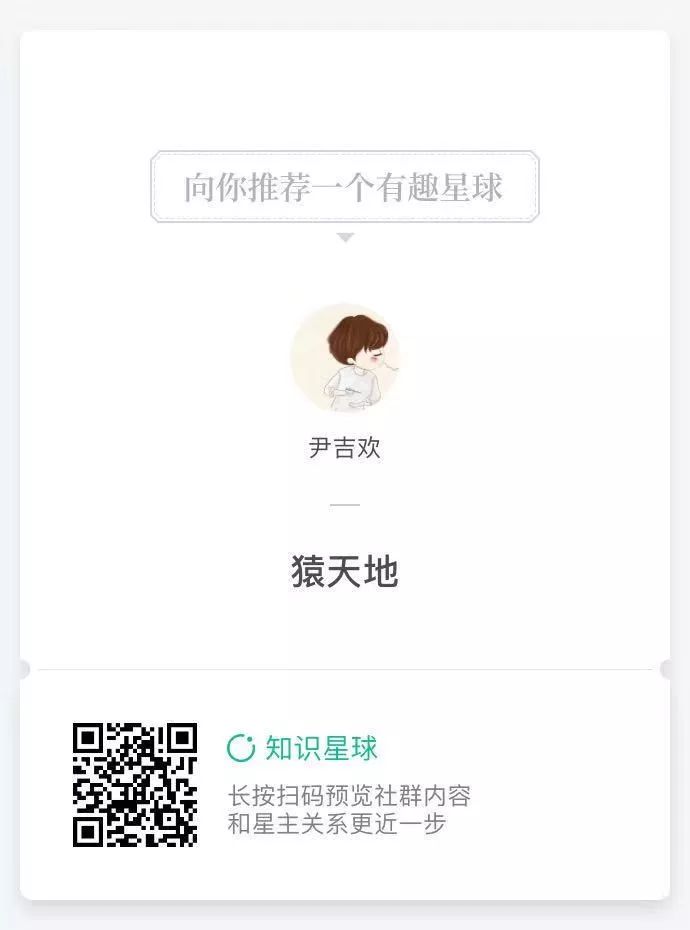那天晚上和@FeignClient注解的深度交流
废话篇
那晚,我和@FeignClient 注解的深度交流了一次,爽!
主要还是在技术群里看到有同学在问相关问题,比如: contextId 是干嘛的?name 相同的多个 Client 会报错?
然后觉得有必要写篇文章聊聊@FeignClient 的使用,百忙之中抽时间,写篇文章不容易啊,记得点赞。
正式篇
Feign 基本介绍
首先来个基本的普及,怕有些同学还没接触过 Spring Cloud。Feign 是 Netflix 开源的一个 REST 客户端,通过定义接口,使用注解的方式描述接口的信息,就可以发起接口调用。
GitHub 地址:
https://github.com/OpenFeign/feign [1]
下面是 GitHub 主页上给的一个最基本的使用示列,示列中采用 Feign 调用 GitHub 的接口。
interface GitHub {
@RequestLine("GET /repos/{owner}/{repo}/contributors")
List<Contributor> contributors(@Param("owner") String owner, @Param("repo") String repo);
@RequestLine("POST /repos/{owner}/{repo}/issues")
void createIssue(Issue issue, @Param("owner") String owner, @Param("repo") String repo);
}
public static class Contributor {
String login;
int contributions;
}
public static class Issue {
String title;
String body;
List<String> assignees;
int milestone;
List<String> labels;
}
public class MyApp {
public static void main(String... args) {
GitHub github = Feign.builder()
.decoder(new GsonDecoder())
.target(GitHub.class, "https://api.github.com");
// Fetch and print a list of the contributors to this library.
List<Contributor> contributors = github.contributors("OpenFeign", "feign");
for (Contributor contributor : contributors) {
System.out.println(contributor.login + " (" + contributor.contributions + ")");
}
}
}
Spring Cloud OpenFeign 介绍
Spring Cloud OpenFeign 是 Spring Cloud 团队将原生的 Feign 结合到 Spring Cloud 中的产物。从上面原生 Feign 的使用示列来看,用的注解都是 Feign 中自带的,但我们在开发中基本上都是基于 Spring MVC 的注解,不是很方便调用。所以 Spring Cloud OpenFeign 扩展了对 Spring MVC 注解的支持,同时还整合了 Ribbon 和 Eureka 来提供均衡负载的 HTTP 客户端实现。
GitHub 地址:
https://github.com/spring-cloud/spring-cloud-openfeign [2]
官方提供的使用示列:
@FeignClient("stores")
public interface StoreClient {
@RequestMapping(method = RequestMethod.GET, value = "/stores")
List<Store> getStores();
@RequestMapping(method = RequestMethod.POST, value = "/stores/{storeId}", consumes = "application/json")
Store update(@PathVariable("storeId") Long storeId, Store store);
}
FeignClient 注解的使用介绍
value, name
value 和 name 的作用一样,如果没有配置 url 那么配置的值将作为服务名称,用于服务发现。反之只是一个名称。
serviceId
serviceId 已经废弃了,直接使用 name 即可。
contextId
比如我们有个 user 服务,但 user 服务中有很多个接口,我们不想将所有的调用接口都定义在一个类中,比如:
Client 1
@FeignClient(name = "optimization-user")
public interface UserRemoteClient {
@GetMapping("/user/get")
public User getUser(@RequestParam("id") int id);
}
Client 2
@FeignClient(name = "optimization-user")
public interface UserRemoteClient2 {
@GetMapping("/user2/get")
public User getUser(@RequestParam("id") int id);
}
这种情况下启动就会报错了,因为 Bean 的名称冲突了,具体错误如下:
Description:
The bean 'optimization-user.FeignClientSpecification', defined in null, could not be registered. A bean with that name has already been defined in null and overriding is disabled.
Action:
Consider renaming one of the beans or enabling overriding by setting spring.main.allow-bean-definition-overriding=true
解决方案可以增加下面的配置,作用是允许出现 beanName 一样的 BeanDefinition。
spring.main.allow-bean-definition-overriding=true
另一种解决方案就是为每个 Client 手动指定不同的 contextId,这样就不会冲突了。
上面给出了 Bean 名称冲突后的解决方案,下面来分析下 contextId 在 Feign Client 的作用,在注册 Feign Client Configuration 的时候需要一个名称,名称是通过 getClientName 方法获取的:
String name = getClientName(attributes);
registerClientConfiguration(registry, name,
attributes.get("configuration"));
private String getClientName(Map<String, Object> client) {
if (client == null) {
return null;
}
String value = (String) client.get("contextId");
if (!StringUtils.hasText(value)) {
value = (String) client.get("value");
}
if (!StringUtils.hasText(value)) {
value = (String) client.get("name");
}
if (!StringUtils.hasText(value)) {
value = (String) client.get("serviceId");
}
if (StringUtils.hasText(value)) {
return value;
}
throw new IllegalStateException("Either 'name' or 'value' must be provided in @"
+ FeignClient.class.getSimpleName());
}
可以看到如果配置了 contextId 就会用 contextId,如果没有配置就会去 value 然后是 name 最后是 serviceId。默认都没有配置,当出现一个服务有多个 Feign Client 的时候就会报错了。
其次的作用是在注册 FeignClient 中,contextId 会作为 Client 别名的一部分,如果配置了 qualifier 优先用 qualifier 作为别名。
private void registerFeignClient(BeanDefinitionRegistry registry,
AnnotationMetadata annotationMetadata, Map<String, Object> attributes) {
String className = annotationMetadata.getClassName();
BeanDefinitionBuilder definition = BeanDefinitionBuilder
.genericBeanDefinition(FeignClientFactoryBean.class);
validate(attributes);
definition.addPropertyValue("url", getUrl(attributes));
definition.addPropertyValue("path", getPath(attributes));
String name = getName(attributes);
definition.addPropertyValue("name", name);
String contextId = getContextId(attributes);
definition.addPropertyValue("contextId", contextId);
definition.addPropertyValue("type", className);
definition.addPropertyValue("decode404", attributes.get("decode404"));
definition.addPropertyValue("fallback", attributes.get("fallback"));
definition.addPropertyValue("fallbackFactory", attributes.get("fallbackFactory"));
definition.setAutowireMode(AbstractBeanDefinition.AUTOWIRE_BY_TYPE);
// 拼接别名
String alias = contextId + "FeignClient";
AbstractBeanDefinition beanDefinition = definition.getBeanDefinition();
boolean primary = (Boolean) attributes.get("primary"); // has a default, won't be
// null
beanDefinition.setPrimary(primary);
// 配置了qualifier优先用qualifier
String qualifier = getQualifier(attributes);
if (StringUtils.hasText(qualifier)) {
alias = qualifier;
}
BeanDefinitionHolder holder = new BeanDefinitionHolder(beanDefinition, className,
new String[] { alias });
BeanDefinitionReaderUtils.registerBeanDefinition(holder, registry);
}
url
url 用于配置指定服务的地址,相当于直接请求这个服务,不经过 Ribbon 的服务选择。像调试等场景可以使用。
使用示列
@FeignClient(name = "optimization-user", url = "http://localhost:8085")
public interface UserRemoteClient {
@GetMapping("/user/get")
public User getUser(@RequestParam("id") int id);
}
decode404
当调用请求发生 404 错误时,decode404 的值为 true,那么会执行 decoder 解码,否则抛出异常。
解码也就是会返回固定的数据格式给你:
{"timestamp":"2020-01-05T09:18:13.154+0000","status":404,"error":"Not Found","message":"No message available","path":"/user/get11"}
抛异常的话就是异常信息了,如果配置了 fallback 那么就会执行回退逻辑:<img data-ratio="0.3015625" data-src="https://mmbiz.qpic.cn/mmbiz_png/WRLYshvT39wMDYmxnbPFQOqE8cEtc1e09M05P0jBB53KMiaTGRzF71ib6ibkZAIfXu7ESzjUzjRecGDKic0B7CsB7A/640?wx_fmt=png" data-type="png" data-w="1920" style="display: block;margin-right: auto;margin-left: auto;width: 100%;border-radius: 4px;margin-bottom: 25px;" />
configuration
configuration 是配置 Feign 配置类,在配置类中可以自定义 Feign 的 Encoder、Decoder、LogLevel、Contract 等。
configuration 定义
public class FeignConfiguration {
@Bean
public Logger.Level getLoggerLevel() {
return Logger.Level.FULL;
}
@Bean
public BasicAuthRequestInterceptor basicAuthRequestInterceptor() {
return new BasicAuthRequestInterceptor("user", "password");
}
@Bean
public CustomRequestInterceptor customRequestInterceptor() {
return new CustomRequestInterceptor();
}
// Contract,feignDecoder,feignEncoder.....
}
使用示列
@FeignClient(value = "optimization-user", configuration = FeignConfiguration.class)
public interface UserRemoteClient {
@GetMapping("/user/get")
public User getUser(@RequestParam("id")int id);
}
fallback
定义容错的处理类,也就是回退逻辑,fallback 的类必须实现 Feign Client 的接口,无法知道熔断的异常信息。
fallback 定义
@Component
public class UserRemoteClientFallback implements UserRemoteClient {
@Override
public User getUser(int id) {
return new User(0, "默认fallback");
}
}
使用示列
@FeignClient(value = "optimization-user", fallback = UserRemoteClientFallback.class)
public interface UserRemoteClient {
@GetMapping("/user/get")
public User getUser(@RequestParam("id")int id);
}
fallbackFactory
也是容错的处理,可以知道熔断的异常信息。
fallbackFactory 定义
@Component
public class UserRemoteClientFallbackFactory implements FallbackFactory<UserRemoteClient> {
private Logger logger = LoggerFactory.getLogger(UserRemoteClientFallbackFactory.class);
@Override
public UserRemoteClient create(Throwable cause) {
return new UserRemoteClient() {
@Override
public User getUser(int id) {
logger.error("UserRemoteClient.getUser异常", cause);
return new User(0, "默认");
}
};
}
}
使用示列
@FeignClient(value = "optimization-user", fallbackFactory = UserRemoteClientFallbackFactory.class)
public interface UserRemoteClient {
@GetMapping("/user/get")
public User getUser(@RequestParam("id")int id);
}
path
path 定义当前 FeignClient 访问接口时的统一前缀,比如接口地址是/user/get, 如果你定义了前缀是 user, 那么具体方法上的路径就只需要写/get 即可。
使用示列
@FeignClient(name = "optimization-user", path="user")
public interface UserRemoteClient {
@GetMapping("/get")
public User getUser(@RequestParam("id") int id);
}
primary
primary 对应的是@Primary 注解,默认为 true,官方这样设置也是有原因的。当我们的 Feign 实现了 fallback 后,也就意味着 Feign Client 有多个相同的 Bean 在 Spring 容器中,当我们在使用@Autowired 进行注入的时候,不知道注入哪个,所以我们需要设置一个优先级高的,@Primary 注解就是干这件事情的。
qualifier
qualifier 对应的是@Qualifier 注解,使用场景跟上面的 primary 关系很淡,一般场景直接@Autowired 直接注入就可以了。
如果我们的 Feign Client 有 fallback 实现,默认@FeignClient 注解的 primary=true, 意味着我们使用@Autowired 注入是没有问题的,会优先注入你的 Feign Client。
如果你鬼斧神差的把 primary 设置成 false 了,直接用@Autowired 注入的地方就会报错,不知道要注入哪个对象。
解决方案很明显,你可以将 primary 设置成 true 即可,如果由于某些特殊原因,你必须得去掉 primary=true 的设置,这种情况下我们怎么进行注入,我们可以配置一个 qualifier,然后使用@Qualifier 注解进行注入,示列如下:
Feign Client 定义
@FeignClient(name = "optimization-user", path="user", qualifier="userRemoteClient")
public interface UserRemoteClient {
@GetMapping("/get")
public User getUser(@RequestParam("id") int id);
}
Feign Client 注入
@Autowired
@Qualifier("userRemoteClient")
private UserRemoteClient userRemoteClient;
参考资料
feign: https://github.com/OpenFeign/feign
spring-cloud-openfeign: https://github.com/spring-cloud/spring-cloud-openfeign
热文推荐
线上RPC远程调用频繁超时问题排查,大功臣Arthas
阿里为啥值4万亿?看它如何应对亿级高并发大流量?如何保障高可用和稳定性,就知道了!
Elasticsearch是一把梭,用起来再说?!
干货 | 携程一次Dubbo连接超时问题的排查



如有收获,点个在看,诚挚感谢
- 本文标签: Netflix js 调试 App 开源 ACE IO Feign https UI CTO 开发 Word bean ribbon git 配置 Apple REST http Service Spring cloud ip map 时间 Eureka src Action Elasticsearch remote cat GitHub list lib Property 高可用 update description API value client BeanDefinition 高并发 并发 spring tar IDE json build message id Qualifier 数据 HTML dubbo 文章
- 版权声明: 本文为互联网转载文章,出处已在文章中说明(部分除外)。如果侵权,请联系本站长删除,谢谢。
- 本文海报: 生成海报一 生成海报二











![[HBLOG]公众号](http://www.liuhaihua.cn/img/qrcode_gzh.jpg)

